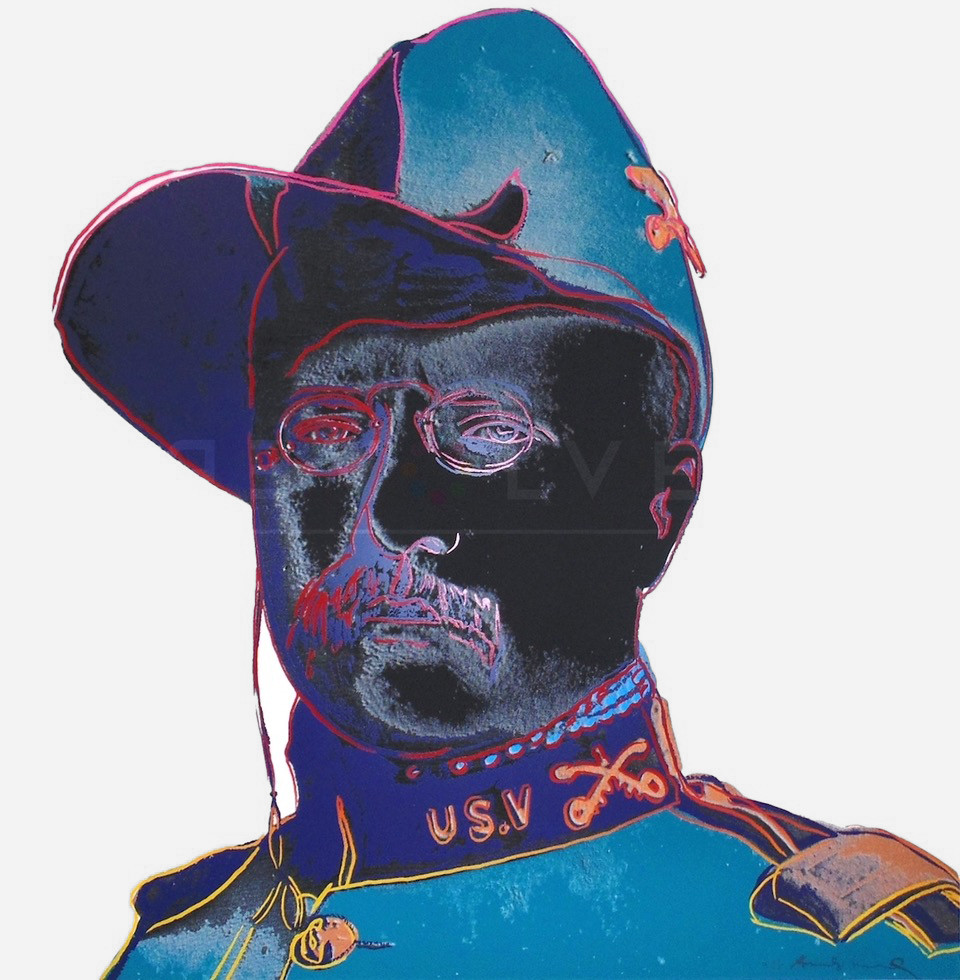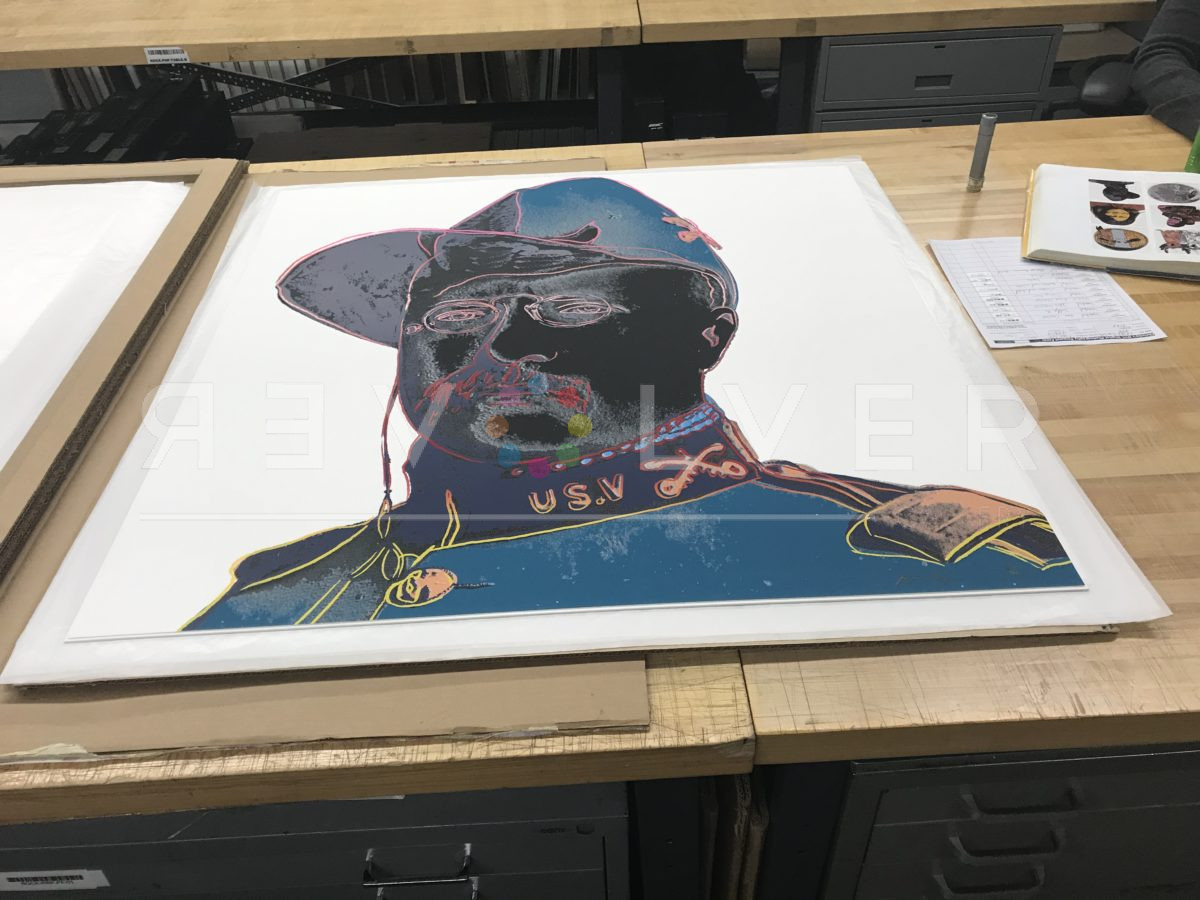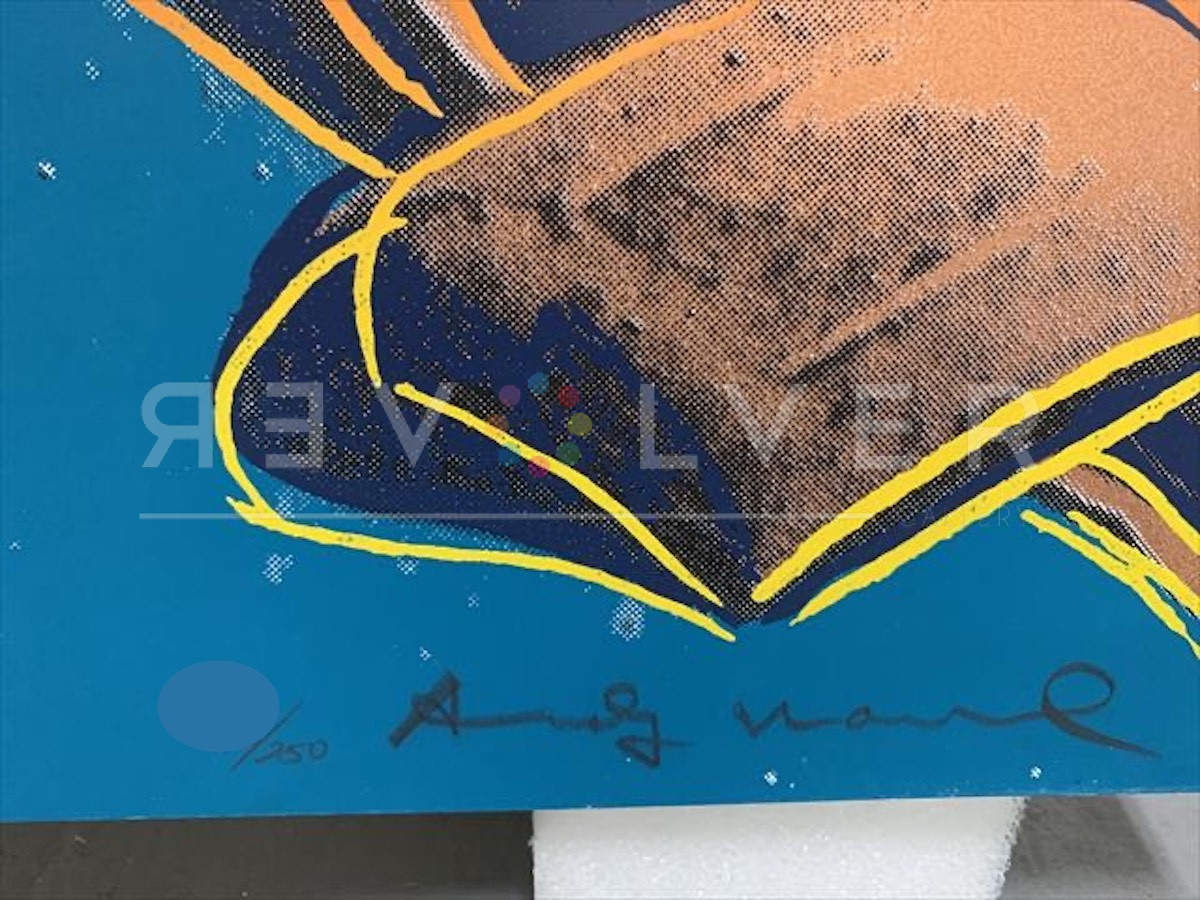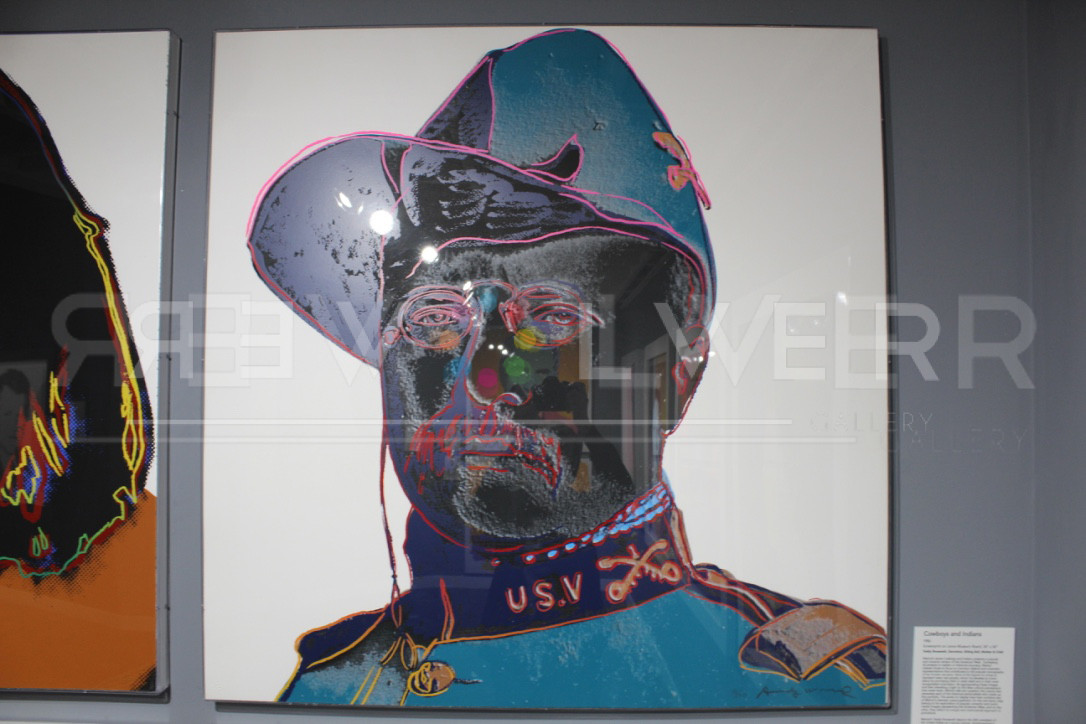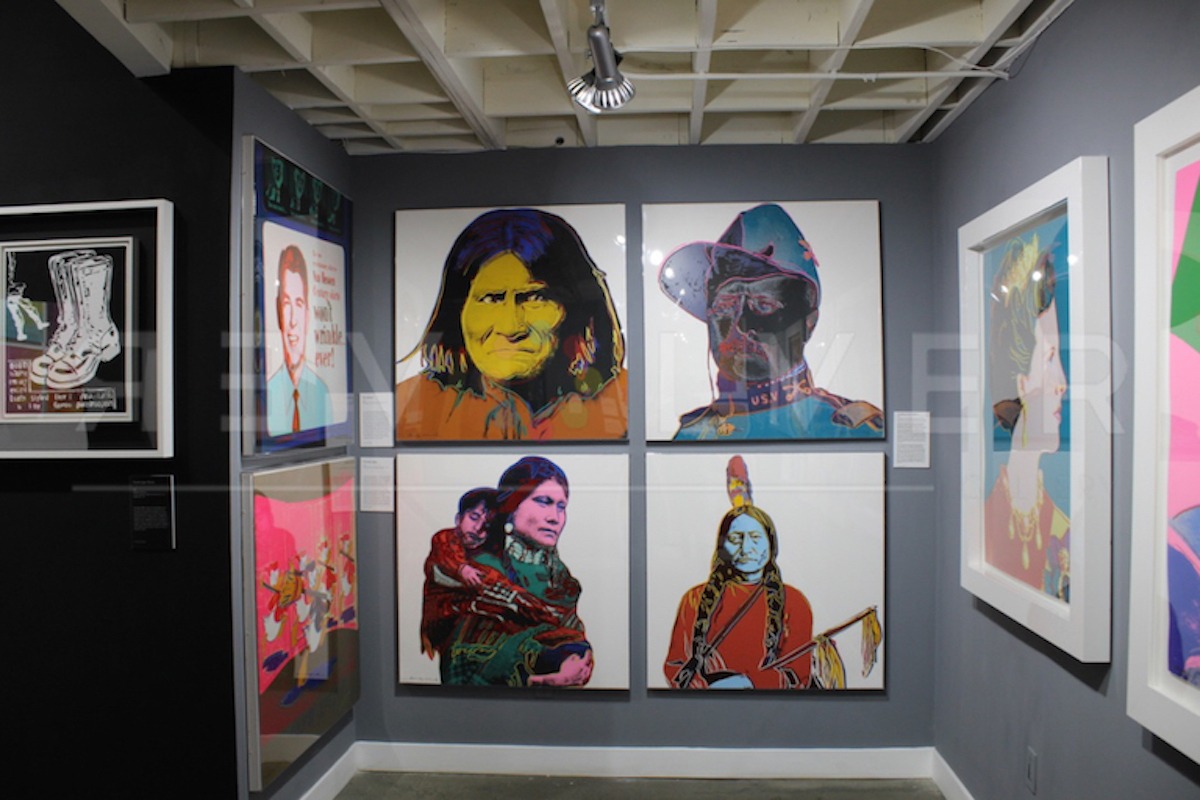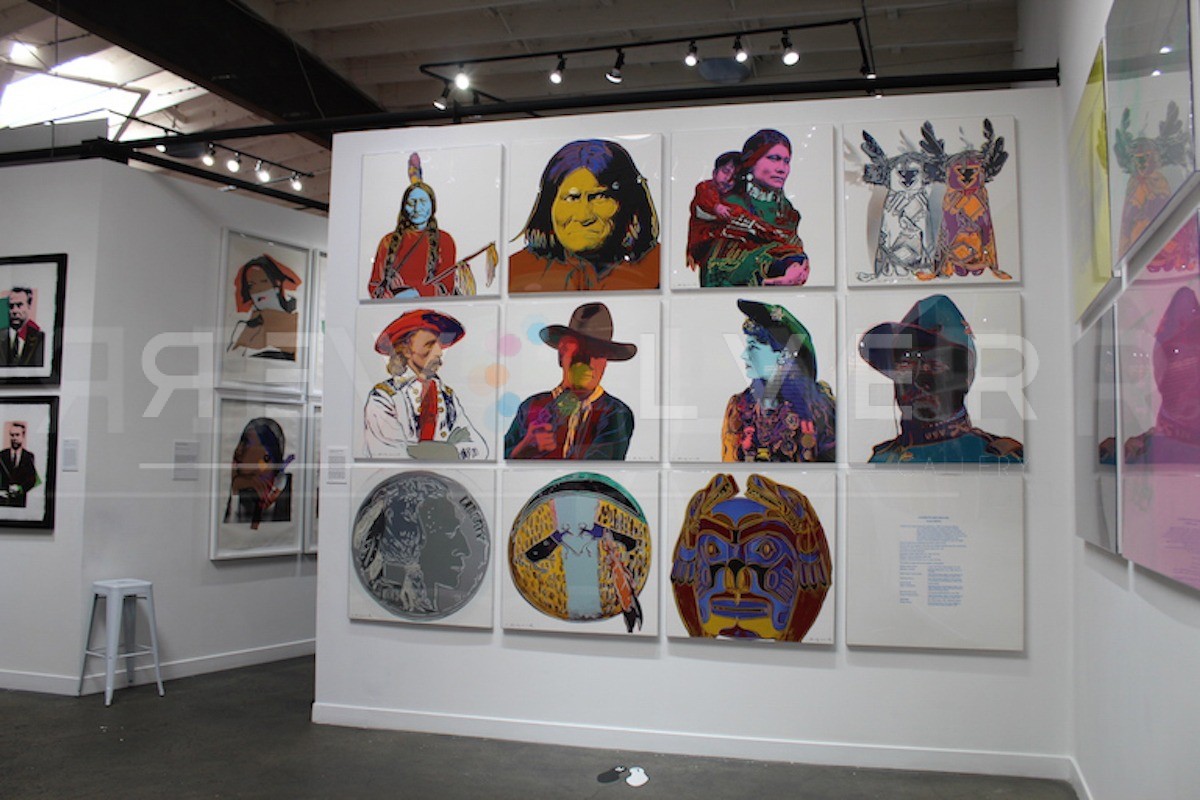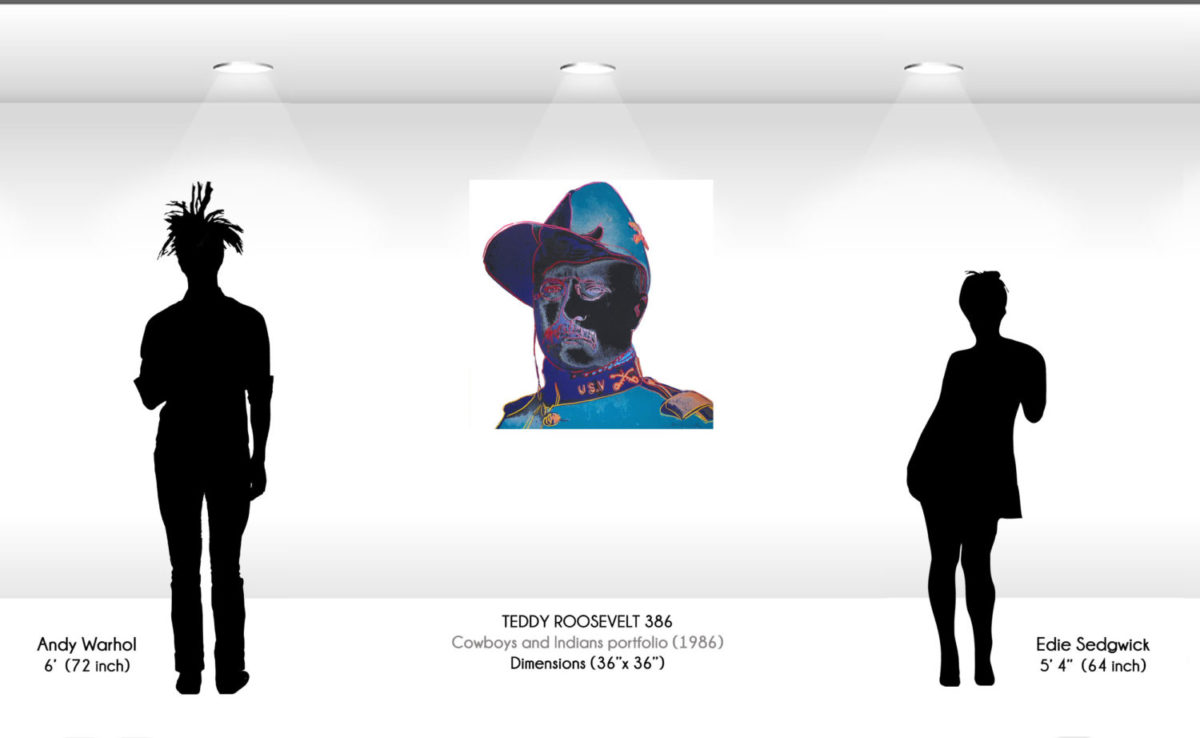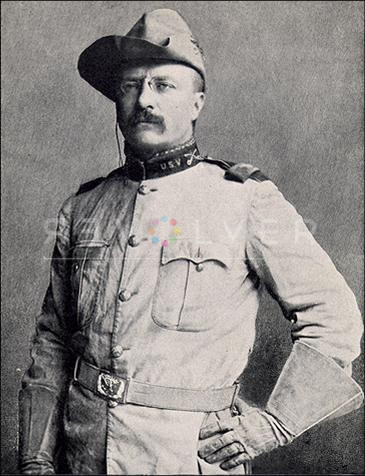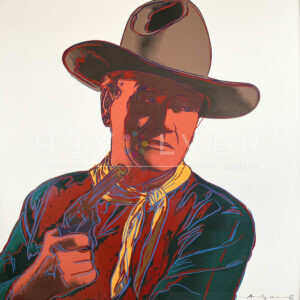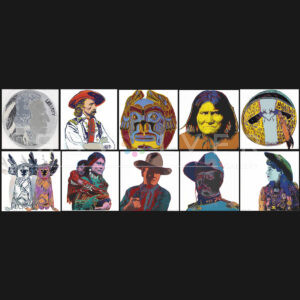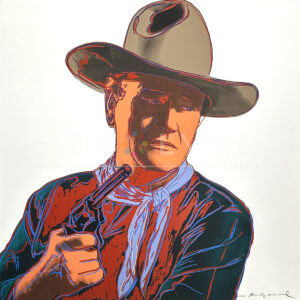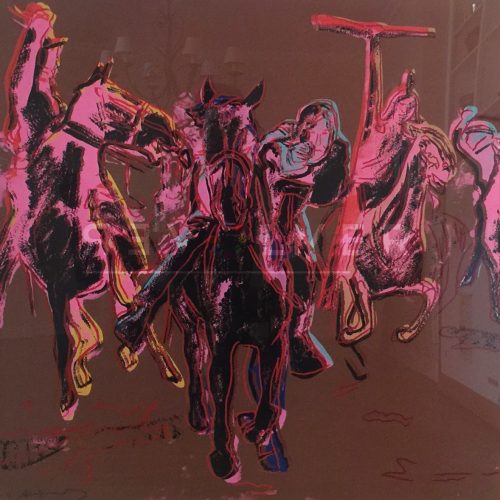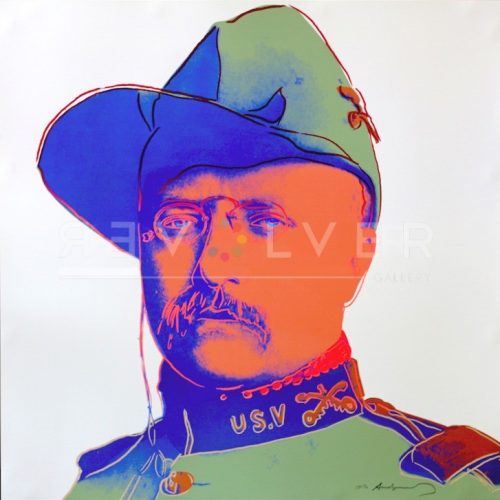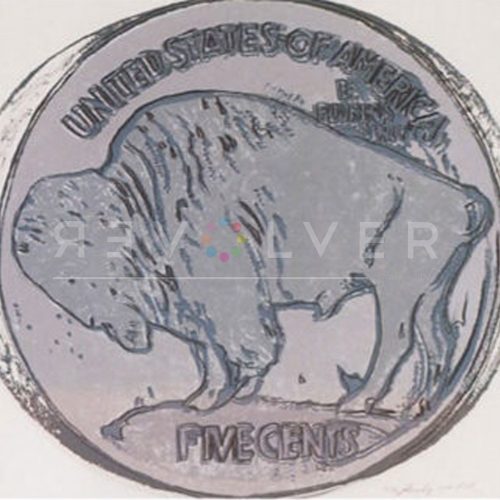Teddy Roosevelt 386 by Andy Warhol is a 1986 screenprint from Cowboys and Indians, a 10 part series of “Old American West” figures and objects. In the series, Warhol captures common notions of the Wild West as they exist in the American imagination.
Warhol used a famous 1898 image of Teddy Roosevelt in a Rough Rider uniform for the basis of the work. The Rough Riders fought against Spanish control of Cuba and eventually settled a deal with Spain to forfeit their American soil. It was three years later when became the 26th U.S. president. It appears that Roosevelt’s conspicuous image and it’s juxtaposed clandestine appearance communicate the impact of pop culture on shaping an identity, but Warhol portrays more than Roosevelt’s true self.
In Teddy Roosevelt 386, Warhol prints the young Teddy Roosevelt in dark black ink. Roosevelt’s outfit dominates the image, not the man himself. His attire is sky blue and indigo, laced with yellow and red etchings. His round glasses, eyes, nose, mustache, and mouth are all sketched in a muted red and pink that are barely visible against his skin. Warhol includes specific details from the original image such as the embroidered U.S.V. initials (United States Volunteers) and the two crossing keys that give away his position as Rough Rider.
Teddy Roosevelt 386 is by and large the darkest work in Cowboys and Indians. When compared to the yellow of Geronimo 384 or pale blue of Annie Oakley 378, there is little contest by way of his complexion or minute decorations embellishing his uniform. However, Roosevelt is still a clearly identifiable figure. The original image remains the most recognized version of the environmentalist (and Founder of the National Park Service), president, and military leader in the Spanish-American War. Warhol accentuates Roosevelt’s fame by denigrating the clear recognizability of his facial features because, even at a distance, Roosevelt’s outline is recognizable.
Through color, the picture also becomes physically and metaphorically darker. Roosevelt had a known opposition towards Native Americans; so did the other American “heroes” in Cowboys and Indians, which is why there is an equal and tense discrepancy between the five of them and the five Native American prints, some portraying the most impactful Indigenous figureheads, like Sitting Bull and Geronimo. Pop culture heroized Teddy Roosevelt, but through color theory and juxtaposing historical forces, Warhol offers a witty paradox about our beloved American heroes and how their portrayal in the media warps reality.
Warhol claimed, however, that a series such as Cowboys and Indians was done with emotional neutrality. “If you want to know all about Andy Warhol, just look at the surface of my paintings and films and me, and there I am. There’s nothing behind it.” Whether Warhol was actually commenting on Roosevelt’s heroism or the morality of his actions is irrelevant. The series is, above all, an effective means of illuminating the “Hollywood” vision of the Old West that has become more real than history itself.
Photo credit: Lt. Theodore Roosevelt of The Rough Riders, 1898. Theodore Roosevelt Collection, Houghton Library, Harvard University.

